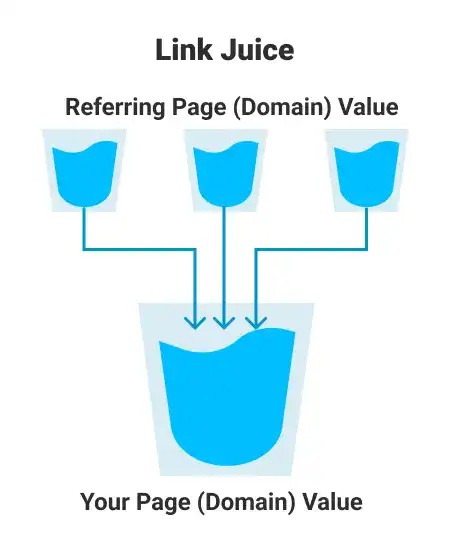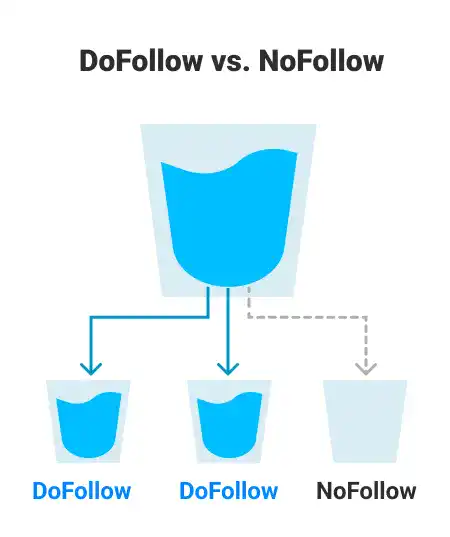Why Are High-Quality Backlinks Important?

High-quality backlinks are a critical factor in this equation. But why are they so important, and how can they transform your SEO strategy? In this chapter, we explore the integral role of backlinks in search engine optimization, detailing their types, benefits, and best practices for acquiring them.
What Are Backlinks and How Do They Work
A backlink is a link created on another website that directs to your page. These links are also called inbound links or incoming links. Backlinks are extremely important for SEO as they provide two key benefits:
Benefits of Backlinks
1. Improved search engine ranking
Having quality backlinks for your website offers various advantages for SEO. As more websites have links that land on your website, you get more votes that tell search engines about your credibility and usefulness. This increases your website's Domain Authority and Page Authority, resulting in a higher ranking in Google and other search engines. Ultimately, the higher page rankings give you better organic traffic.
2. Bringing in referral traffic
Backlinks act as a virtual gateway leading users to your website from another website. As soon as the visitors click on a backlink, they are directed to the landing page on your website. Thus, you get more and more referral traffic from the linking site. It can help you generate more leads and higher engagement.
So the next big question is – are all the backlinks worth it? To get this question answered, let's first understand the different types of backlinks.
Types of backlinks
There are two types of backlinks: Natural and Manual backlinks. Here is some brief information about each one of them:
Natural Backlinks
Natural backlinks are created and placed by websites without the linked website’s owner asking for them. These links can be a part of the website’s editorial content, social media content, comments, forum discussions, or a mention.
It is a backlink you earned due to the relevance of your content. For instance, a nutrition expert writes a blog on healthy recipes and includes a link to a website that sells health supplements online. This is voluntary backlinking that comes as a recommendation and is highly valuable.
Editorial links are a type of natural backlinks based on a similar concept. These links are explicitly included in the editorial content created by independent publishers, journalists, or bloggers.
When editors find relevant content, they create the link due to the quality and value of the content. Editorial backlinks are placed in articles, blogs, and news sections on the other website. For instance, a journalist writes an article about an interview with a leader and includes a link to the leader’s blog or website for readers to learn more about his insights.
Manual Backlinks
Requesting social media influencers, bloggers, online directories, and other relevant website owners to review your services or products and post a backlink to their website is manual backlink creation.
Guest blogging, social media promotion, participating in interviews on other websites within your industry, broken link building, resource page link building, and reaching out to local business directories are a few ways to do it. For instance, a cosmetics company’s marketing team reaches out to relevant bloggers and requests them to review their product or service, offering free samples.
In addition to incoming links, there are other types of links called internal links, which are links placed within the same website for its different pages. These let users navigate the website effortlessly and discover its different sections.
High-quality vs. low-quality backlinks
A few critical factors make a backlink good or bad. A good backlink comes from a trusted source relevant to your website or industry. Good links are organic and voluntarily created by third parties because of the interest of their audience and the genuineness of your product or services. There is no exchange of money involved. These high-quality links with unique anchor text should direct the user to a trusted destination, not an unexpected URL, and will not normally be hidden by search engine crawlers in any way.
On the other hand, the creation of low-quality backlinks includes an exchange of money and other perks. Spammy websites and large-scale paid link schemes may be involved. These are guilty of over-using keywords and trying to manipulate search engines.
Key factors as high-quality backlinks:
- Authoritativeness: Backlinks from authoritative websites are considered good links. Links from high-ranked web pages with many followers bring more visitors than the weaker ones. High-quality backlinks are more effective at earning link equity or link juice for your website.
- Relevance: If the website is related to what you do, there are higher chances that it will bring more related traffic to your website. For instance, a website that posts technology news is more likely to bring valuable traffic to your gadgets-selling web pages than a website that sells baby products.
- Natural backlinks: Backlinks earned through valuable content appear natural and are more favored by search engines than manually created ones.
Link Juice
"Link juice" is a term used in Search Engine Optimization (SEO) to describe the value or equity passed from one site or page to another through hyperlinks. Essentially, it refers to the power or authority that a link can transfer to another webpage regarding ranking ability.
Search engines like Google consider links as votes of confidence or endorsements between websites. When a webpage links to another site, it shares some of its own site's authority with the linked site. This shared authority, or link juice, can help improve the linked site's ranking on search engine results pages (SERPs).

Note: DoFollow and NoFollow
DoFollow and NoFollow links are HTML attributes that instruct search engines to pass or not pass the link juice to the linked website. DoFollow links contribute to the visibility and ranking of a website, while NoFollow links indicate sponsored or paid links that are not followed by a search engine. DoFollow links allow link juice to flow freely from one page to another, contributing to higher SEO rankings, while NoFollow links result in not passing any link juice. By creating high-quality content and building relationships in your niche, more DoFollow links can be achieved.

Regarding HTML coding, you don't need to add any specific attribute to the anchor tag. By default, all links are considered DoFollow.
Example of DoFolllow Anchor Tag
<a href="https://www.example.com">Link</a>
To make a NoFollow link, add the rel="nofollow" attribute to the <a> tag. This instructs search engines that the hyperlink should not influence the ranking of the link's target in the search engine's index.
Example of NoFolllow Anchor Tag
<a href="https://www.example.com" rel="nofollow">Link</a>




